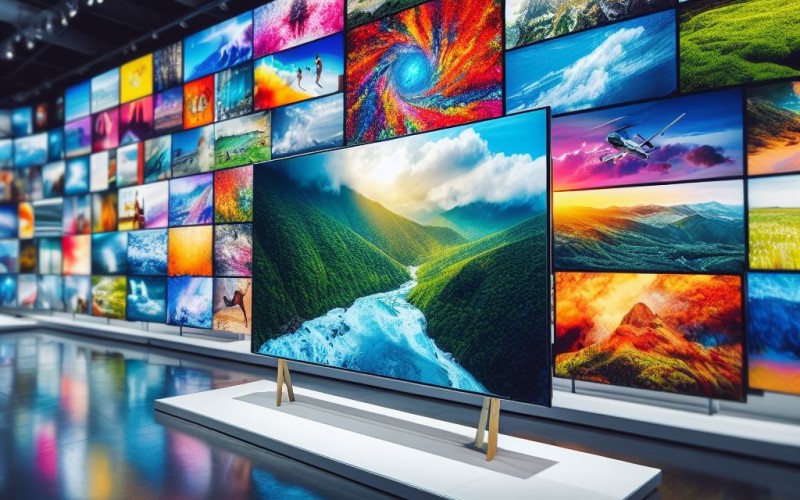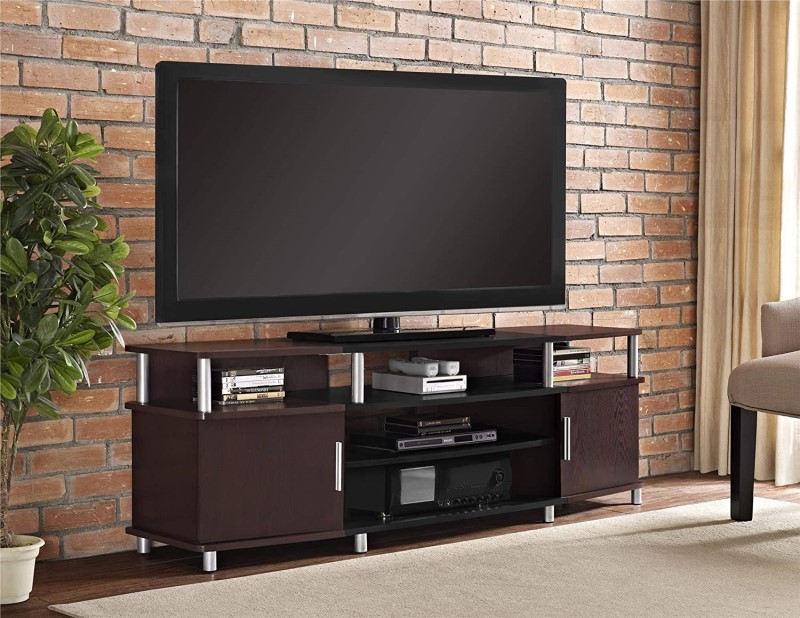How To Win the TV Size Debate
If you start researching proper TV size, inevitably you’ll get into an argument with your significant other. It’s as predictable as it is avoidable. TV size is a common source of contention between couples. Why? A lot of reasons. Let’s talk about how to win the TV size debate. It’s probably easier than you think.
Why the Debate?
There are a lot of reasons why people argue about TV size. Larger TVs take up more space in a room. That affects aesthetics as well as furniture and wall art placement. People often look at a TV as mostly a big, black rectangle that is a dead spot in their living room. They’d rather have it as small as possible so that the effect is minimized. Of course, there is the cost. Larger TVs cost more than smaller ones. When you add in all the aesthetic concerns, why would someone want to pay more for something that they don’t want in the first place?
The Real Problem
When you look at a TV on the wall of a bix box store, it is impossible to know how it will look in your home. People think they know how it will look, but story after story of people bringing home a TV and realizing that it isn’t as big (or is much bigger) than they thought proves otherwise. This also happens all the time with subwoofers as well.

Some people think they can avoid this issue by measuring out the size of the screen in their home. We can tell you that this rarely works. Holding up a tape measure gives you some idea of the size of your prospective TV, but it won’t really convey what it will be like to live with the larger TV.
How To Win the TV Size Debate
The real solution to the debate is to experience the size of the TV in your room. This is easiest if your current TV is still working. What you need to do is show how big the TV will actually be in your room. There are two general placements for TVs: wall-mounted and stand-mounted. Let’s discuss the solution for each.

Wall Mounted
If your TV is wall-mounted, you have a very easy solution to this problem. As you can see above, with a wall-mounted TV, there is usually an area around the TV behind it. What you’ll want to do is outline the size of the new TV on the wall with tape. We’d recommend using that blue painter’s tape. These days, most TVs have minimal bevels but we’d recommend outlining the full TV size (if you have a model in mind). If you don’t have a TV model picked out, outline the size of the screen plus at least an inch on every size to simulate the bevel.
Stand-Mounted TV

If you have a stand-mounted TV, using tape on the wall probably won’t work. The easiest solution is to affix a bit of cardboard to the edges of your current TV to simulate the size of your proposed TV. We’ve all got a bunch of cardboard lying around from all those impulse Amazon purchases so materials shouldn’t be an issue. Again, if you have a TV model in mind, you can use its specific dimensions. If you don’t, you can use a website like this to get the screen dimensions.
How This Wins the Debate
You now have a simulation of the size of your new TV in your home. Most of the time, the TV size debate originates from the fact that the two people have completely different assumptions of how the new, bigger TV will look in their homes. The tape or cardboard will show you both exactly how it will look.
When people look at TVs in a store, they often get far too close (or far away) and can’t really accurately envision how it will look in their homes. By building a mock-up of the TV, you’ll both be able to see exactly how it will look. You want to live with this mock-up for a while. It is essential to talk about how big (or small) the new TV looks when you are watching the old TV.
You may find that your planned TV size is actually too large! Hey, we said someone would win the TV size debate. We didn’t say it would be you!



Our smartphones (both Android and iOS) can use augmented reality to show us how anything will look in a room.